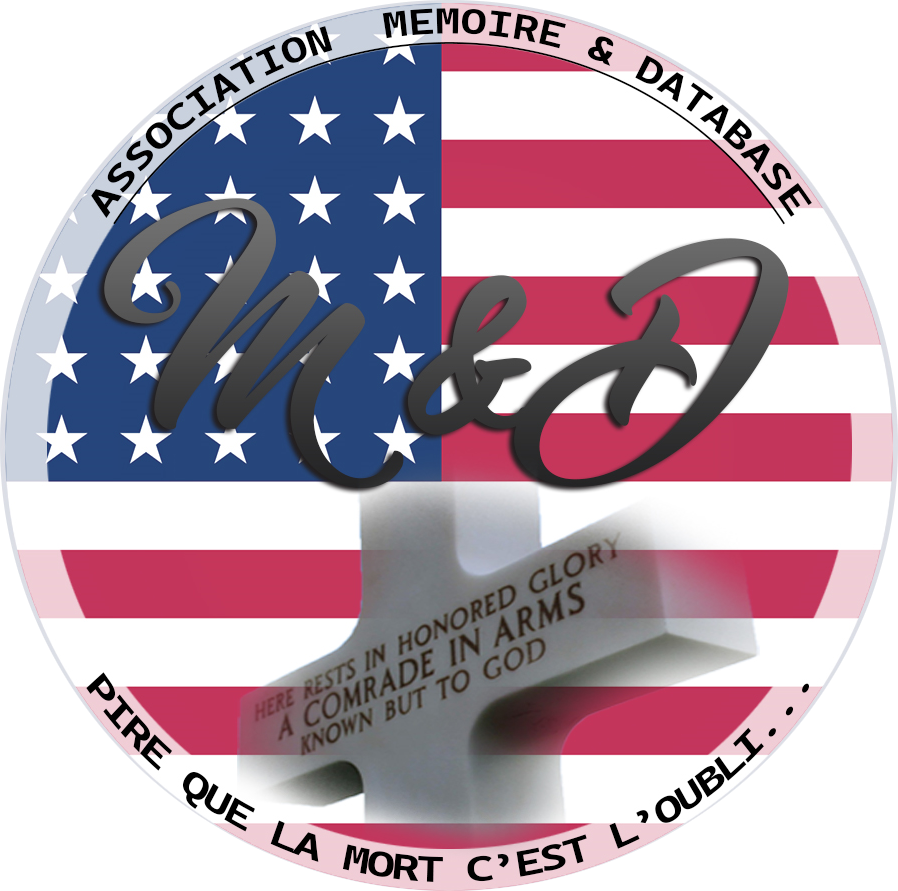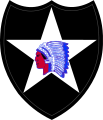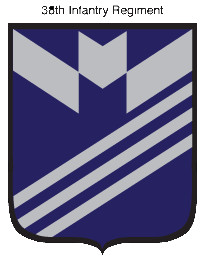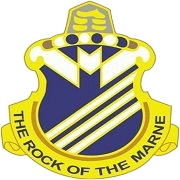|
Ervin LINDEMAN
| ||||||||||||||||||||||||
|---|---|---|---|---|---|---|---|---|---|---|---|---|---|---|---|---|---|---|---|---|---|---|---|---|
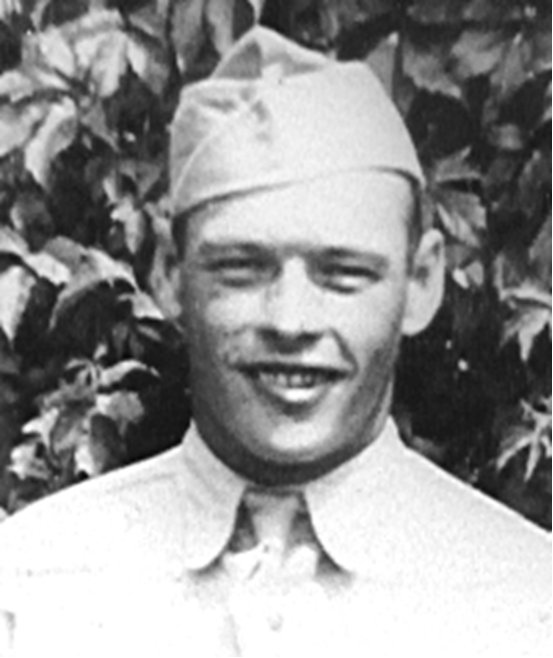 | ||||||||||||||||||||||||
| NUMBER OF SERVICE | 37280344 | |||||||||||||||||||||||
| AGE | 28 yo | |||||||||||||||||||||||
| DATE OF BIRTH | 28 February 1916 Glenham, Campbell County DAKOTA DU SUD | |||||||||||||||||||||||
| ETAT | DAKOTA DU SUD | |||||||||||||||||||||||
| FAMILY | Parents: John LINDEMAN & Katherine Klein Siblings: Alvina, Erna, Ervin, Helen, Kathryn, Carolyn & Ernest | |||||||||||||||||||||||
|
Ervin's name has been misspelled, it must be written as Lindeman and not as Lendeman. The Lindeman family is from Gross-Liebental, Russia. Ervin's father John Lindemann emigrated from Russia to North America with these parents Johan Lindeman and Karolina Helfenstein on September 10, 1901. They depart for the United States aboard the SS SS Columbia which leaves the port of Hamburg on October 28, 1901 via Cuxhaven to arrive in New York on November 7, 1901. Last known residence Podolien, Russia. | ||||||||||||||||||||||||
| RANK | Private First Class | |||||||||||||||||||||||
| FONCTION | InfantryMan | |||||||||||||||||||||||
| JOB BEFORE ENLISTEMENT |  | |||||||||||||||||||||||
| DATE of ENLISTEMENT | 5 June 1942, Fort Snelling, MINNESOTA | |||||||||||||||||||||||
| COMPANY | Company M | |||||||||||||||||||||||
| REGIMENT SQUADRON | 38th Infantry Regiment | |||||||||||||||||||||||
| DIVISION GROUP | 2nd Infantry Division "The Indianhead" | |||||||||||||||||||||||
| DATE OF DEATH | 14 August 1944 | 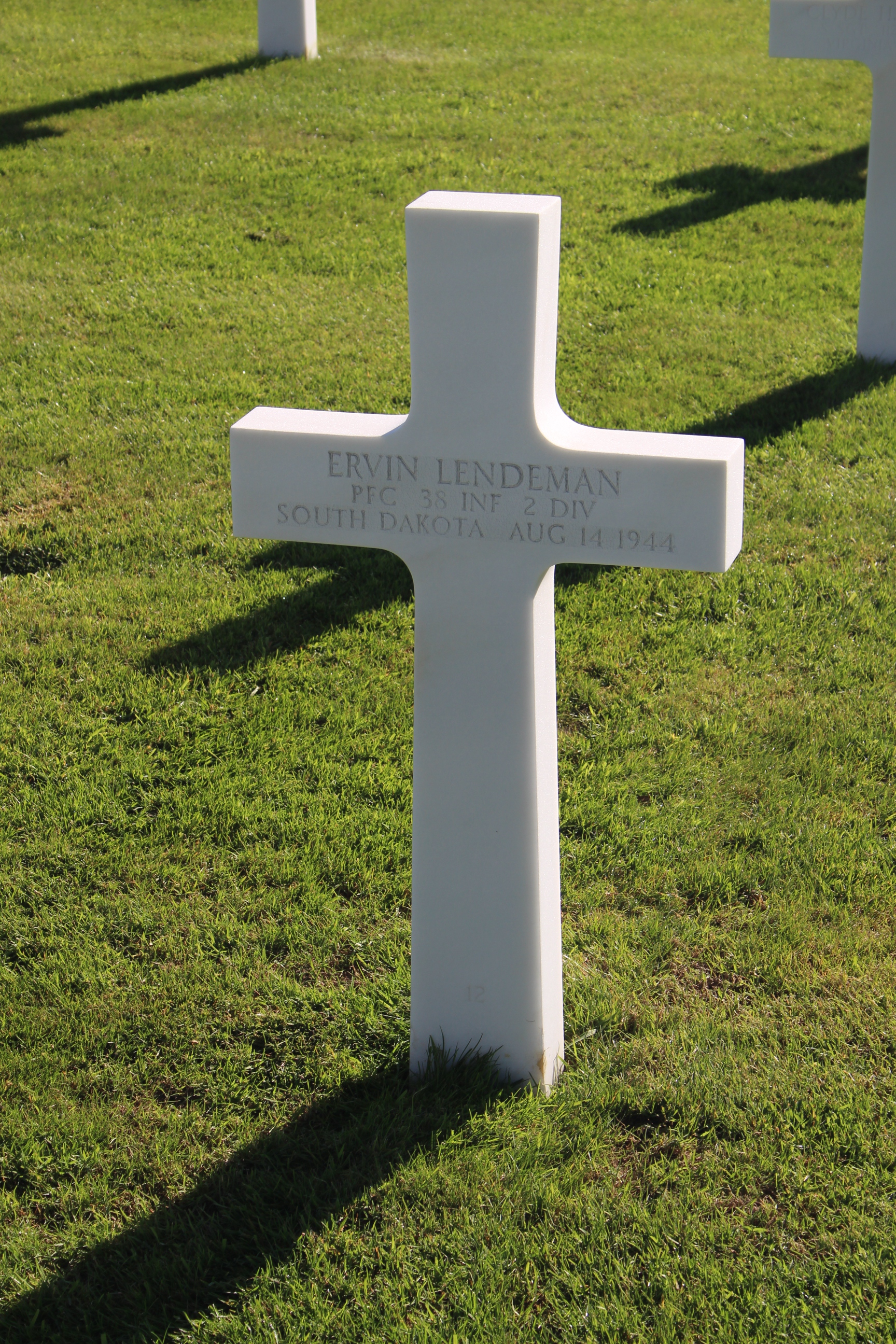 | ||||||||||||||||||||||
| STATUS | KIA | |||||||||||||||||||||||
| PLACE OF DEATH | Chaulieu (Manche) 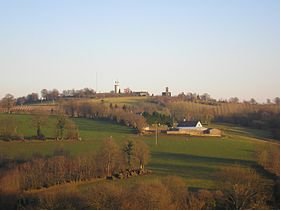 Some information mentions fighting for the capture of the 366 hill located in Chaulieu (Manche). This town is located 2 kilometers south of the intersection of the Sourdeval-Tinchebray road. | |||||||||||||||||||||||
| CEMETERY | BRITTANY AMERICAN CEMETERY of St James | |||||||||||||||||||||||
| GRAVE |
| |||||||||||||||||||||||
| DECORATION |
| |||||||||||||||||||||||
| ||||||||||||||||||||||||
| STORY | ||||||||||||||||||||||||
|
Ervin Lindeman was born in Campbell County (South Dakota) and was the son of Russian immigrants. He had 5 sisters and 1 brother. After attending school, he became a farmer and devoted his free time to hunting. Single, he joined the US Army in June 1942 and was sent to Fort Snelling (Minnesota). After his basic training, Ervin joined the 38th Infantry Regiment of the 2nd Infantry Division; he continued training at Camp Mc Coy (Wisconsin) from December to March 1943. In August and September, he took part in great manoeuvres in Louisiana and then returned to Camp Mc Coy before the big moment. On 8 October, Ervin and his division left New York for Belfast (Northern Ireland) where they landed on the 18th and settled in the counties of Down and Armagh. The training became more intensive there. In April 1944, Ervin moved to Wales and Swansea. At the end of May, they were sent to the harbours of Bristol and Cardiff. On 7 June, the 2nd Infantry Division landed on Omaha Beach; Ervin and his regiment arrived there in the evening. On 9 June, the 38th Infantry Regiment is engaged at Trévières, reaching its Northern outskirts late in the day before a strongly entrenched enemy. With the help of artillery support and other units later on, the regiment progressed and entered the village in which it fought through the night. On the morning of 10 June, the Germans withdrew; after another artillery fire, the 38th launched the final assault and seized the village early in the morning. Then the advance on the forest of Cerisy took place; they freed Cerisy-La-Forêt on the same day, despite a strong opposition from elements of the 352nd German Infantry Division. On 12 June, the 38th attempted to cross the river Elle but the Germans had installed defences that prevented the operation. On the 13th, new attempts were made in various places, such as the Moulin des Rondelles or La Maumistière. The assaults under enemy fire lead to acts of courage and bravery; the crossing of the river was carried out and cost 540 human lives. The road to Saint-Lô was now open, but the division encountered a major obstacle with the hill 192, which height offered a long-range observation post miles around. This hill was held by the 9th Regiment of Fallschirmjägers; these German paratroopers had set up well camouflaged defensive positions, taking advantage of a labyrinth of hedges connected by hollow paths, of the orchards, that gave them a view on the attackers who were exposed to them. This was an objective that the V Corps entrusted to the 2nd Infantry Division. After two first unsuccessful attempts on 12 and 13 June, on the 16th a new assault was launched. Ervin’s 38th climbed up the Northern slope and managed to make its way to the ridge but the defenders gave it their all and the men of the 38th had to give up. During these three days, the losses of the division amounted to 1250 killed. The positions would thus remain that way for almost a month, no further attempts were launched against the Hill 192 during this period. During these four weeks, the mistakes made the first days were analysed, the fighting techniques in the jungle of the hedges were studied, plans put in place with patrols sent on enemy lines. On July 11, the campaign for Saint-Lô resumed with the hill being taken, which was an essential element. Ervin’s third battalion was in reserve at the beginning of the attack; only the 1st and 2nd battalions of the 38th were launched for the assault. After artillery preparation, at 6 am, the assault began and immediately encountered an intense and violent barrage of fire from the German paratroopers. They repelled the counterattacks; the hand-to-hand combats, sometimes with a knife, only allowed a progression of a few metres. The 3rd Battalion was engaged to support the offensives. At noon, the 38th was at the top, at the end of this first day of harsh fighting, the units were exhausted, but a large part of the hill was under control. The next day, the assault resumed at 11 am; the last German resistance collapsed and retreated, giving the 2nd Infantry Division, after a month of waiting, the capture of hill 192, and thus opening the road to Saint-Lô for the 29th Division. On 28 July, after a few days of rest and rehabilitation, the division is engaged in Operation Cobra; East of the military plan, towards Vire. The 38th is level with Saint-Jean-des-Baisants; the units are again facing the German paratroopers. The 23rd Infantry Regiment launches the attack and collides with the fearsome defenders and enters the village only at the end of the day; the 38th on the flank has to break the defences in turn and clean the outskirts of the commune. At the end of July, the division takes the direction of Torigni-sur-Vire and crosses the Vire river. From August 7 to 12, the 3rd battalion holds defensive positions North of Vire. On 13 August, the battalion’s mission is to cut off the Sourdeval-Tinchebray road, which is the division’s next objective; Ervin and his M company’s mission is to take Hill 366 at Chaulieu, South of Vire, which serves as an observation point for the Germans. On 14 August, during the assault to take this hill, Ervin falls under enemy fire… His body was subsequently transferred to Tinchebray, which was the last objective of the division in Normandy before moving to Brittany. On 11 September, Katie, Ervin’s mother, received a telegram announcing that her son had been missing in action since 14 August. On his cross at the Saint-James cemetery, his name was engraved as «Ervin Lendeman», because a spelling mistake had been made when he enlisted. | ||||||||||||||||||||||||
Activated/Activé |
Normandy/Normandie |
| 26 Octobre 1917 | Days of Combat/Jour de Combat 303 |
| Casualties/Victimes 16 795 | |
Entered Combat/Entré au combat |
|
| 8 Jun 44 Normandy | |
|
Commanding Generals/Commandants généraux Maj. Gen. John C. H. Lee (Nov 41 - May 42) |
Campaigns/CampagnesNormandy (6 Jun 44 - 24 Jul 44) |
PLAN DE ROUTE DE LA CAMPAGNE - CAMPAIGN ROUTE MAP |
|
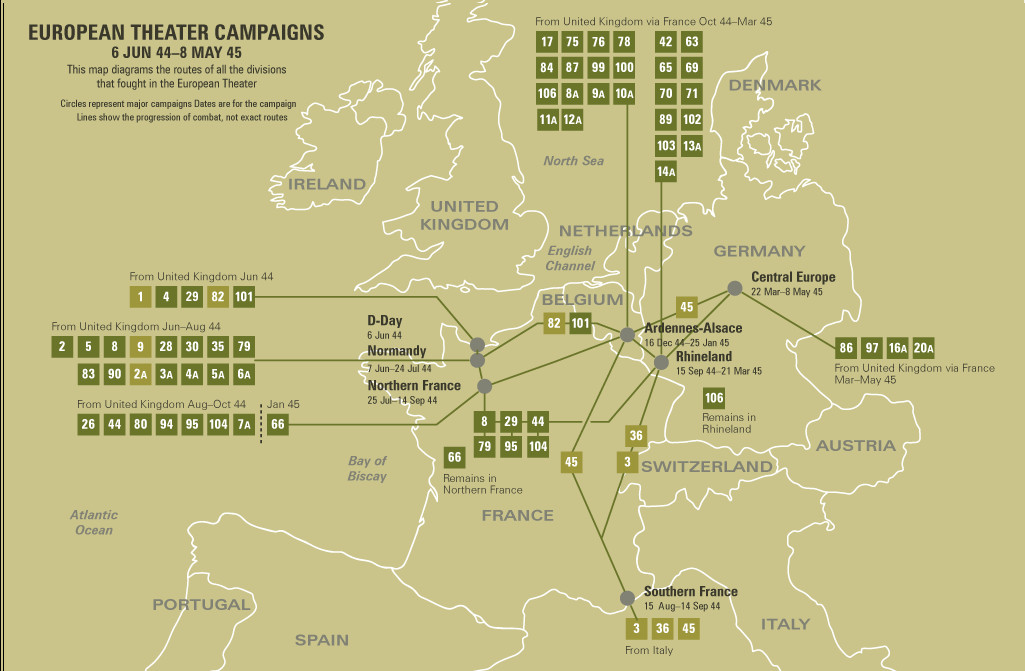 |
|
DIVISION CHRONICLEAfter training in Ireland and Wales from October 1943 to June 1944, the 2d Infantry Division crossed the channel to land on Omaha Beach on D plus 1, 7 June 1944, near St. Laurent-sur-Mer. Attacking across the Aure River, the Division liberated Trevieres, 10 June, and proceeded to assault and secure Hill 192, the key enemy strongpoint on the road to St. Lo. With the hill taken 11 July 1944, the Division went on the defensive until 26 July. Exploiting the St. Lo break-through, the 2d Division advanced across the Vire to take Tinchebray 15 August 1944. The Division then moved west to join the battle for Brest, the heavily defended fortress surrendering 18 September 1944 after a 39-day contest. The Division took a brief rest 19-26 September before moving to defensive positions at St. Vith. The German Ardennes offensive in mid-December forced the Division to withdraw to defensive positions near Elsenborn, where the German drive was halted. In February 1945 the Division attacked, recapturing lost ground, and seized Gemund, 4 March. Reaching the Rhine 9 March, the 2d advanced south to take Breisig, 10-11 March, and to guard the Remagen bridge, 12-20 March. The Division crossed the Rhine 21 March and advanced to Hadamar and Limburg, relieving elements of the 9th Armored Division, 28 March. Advancing rapidly in the wake of the 9th Armored, the 2d Division crossed the Weser at Veckerhagen, 6-7 April, captured. Gottingen 8 April, established a bridgehead across the Saale, 14 April, seizing Merseburg on the 15th. On the 18th the Division took Leipzig, mopped up in the area, and outposted the Mulde River; elements which had crossed the river were withdrawn 24 April. Relieved on the Mulde, the 2d moved 200 miles, 1-3 May, to positions along the GermanCzech border near Schonsee and Waldmunchen, and attacked in the general direction of Pilsen, reaching that city as the war in Europe ended. |
CHRONIQUE DE DIVISIONAprès s'être entraînée en Irlande et au Pays de Galles d'octobre 1943 à juin 1944, la 2e Division d'infanterie traverse le chenal pour débarquer à Omaha Beach le jour du 1er au 7 juin 1944, près de Saint-Laurent-sur-Mer. Attaquant de l'autre côté de la rivière Aure, la division libéra Trévires, le 10 juin, et attaqua et sécurisa la colline 192, le principal point d'appui de l'ennemi sur la route de Saint-Lô. Avec la montée de la colline le 11 juillet 1944, la division est passée sur la défensive jusqu'au 26 juillet. Exploitant la percée de Saint-Lô, la 2 e division avança à travers la Vire pour prendre Tinchebray le 15 août 1944. La division se dirigea ensuite vers l'ouest pour rejoindre la bataille de Brest, la forteresse fortement défendue capitulant le 18 septembre 1944 après un combat de 39 jours. La division a pris un peu de repos du 19 au 26 septembre avant de passer à des positions défensives à St. Vith. L'offensive des Ardennes allemandes à la mi-décembre a contraint la division à se replier vers des positions défensives près d'Elsenborn, où la campagne allemande a été stoppée. En février 1945, la division attaqua, reprenant le terrain perdu et s'empara de Gemund le 4 mars. Atteignant le Rhin le 9 mars, le 2d s'avance vers le sud pour prendre Breisig, 10-11 mars, et pour garder le pont de Remagen, du 12 au 20 mars. La Division a traversé le Rhin le 21 mars et a avancé à Hadamar et Limburg, en soulageant des éléments de la 9ème Division Blindée, le 28 mars. Avançant rapidement dans le sillage de la 9ème Armored, la 2d Division a traversé la Weser à Veckerhagen, 6-7 avril, capturé. Göttingen, le 8 avril, établit une tête de pont à travers la Saale, le 14 avril, s'emparant de Merseburg le 15. Le 18, la division s'empare de Leipzig, épongée dans la région, et a quitté la rivière Mulde; les éléments qui avaient traversé la rivière ont été retirés le 24 avril. Relâché sur la Mulde, le 2d se déplace de 200 miles, 1-3 mai, à des positions le long de la frontière Tchécoslovaque près de Schonsee et Waldmunchen, et attaque dans la direction générale de Pilsen, atteignant cette ville comme la guerre en Europe a pris fin. |
| SOURCE INFORMATION & PHOTO | Armydivs.squarespace.com |
|---|
| SOURCE INFORMATION & PHOTO | JF PELLOUAIS - 2nd Indianhead Division Association - World War II News - Find a Grave - The Fallen Sons and Daughters of Sud Dakota WW2 - Familytreemaker.genealogy.com - Frédéric LAVERNHE |
|---|---|
| PROGRAMMER | Garrett, Clive, Frédéric & Renaud |


